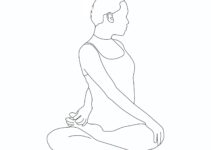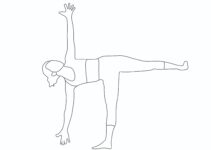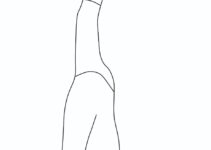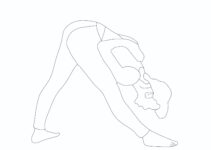What is the meaning of Viparita Karani?
Viparita Karani is pronounced as ‘vip-par-ee-tahcar-AHN-ee’. The word Viparita means ‘turned around’, ‘reversed’, and ‘inverted’, while the meaning of Karani is ‘action’. As per Gheranda Samhita, it is the destroyer of all diseases. It means the practice of the yoga pose helps to overcome many dreadful diseases and disorders. The Viparita Karani has given more significant weightage to Gheranda Samhita, wherein it has been mentioned that the yoga pose even perishes world dissolution.

Philosophy and origin
Viparita Karani is a Sanskrit word. Viparita show inverted, and Karani denotes action. It is considered as both asana and mudra. The origin of the yoga pose can be traced to the 17th-century book Hath Yoga. It is also known as Narakasana and Kapalasana too. Viparita Karani is considered a mudra Hatha yoga wherein the main motto is to channel energy into the upper parts of the body.
How do you do Viparita Karani step by step?
- Lie in a relaxed supine position with legs together.
- Raise the legs, keeping them straight.
- Push down on the arms and hands and raise the buttocks.
- Support the lower back with hands, keeping elbows on the floor.
- Remain steady for some time.
- Inhale and exhale completely, holding the breath and pumping the stomach; this is Viparita Karani.
What are the benefits of Viparita Karani?
- Skin glowing: The practice of the yoga pose helps to glow skin as blood flows to the entire body in an inverted position. Simultaneously, it also invigorates the brain. Maintaining regularity also brings lustre to your skin and face.
- Hair fall: If somebody is anxious about hair fall problems, they should do the Viparita Karani regularly. The yoga pose ensures smooth blood flow to the head region. The oxygenated blood massages the scalp and stimulates the hair follicles. Thus, the Legs-up-the-wall pose effectively prevents hair fall, greying of hair, and other hair problems.
- Anti-aging: The yoga pose helps to glow your skin by increasing its elasticity. On the other hand, it also revitalises the entire body system, especially the upper body region. The smooth blood flow in the head region is suitable for cognitive domains and hair problems.
- Hypoactive thyroid: The inverted yoga pose massages the thyroid gland. It helps to treat hypoactive thyroid.
- Stimulates appetite: The practice of The Legs-up-the-Wall pose stimulates the digestive system, which in turn ensures proper secretion of hormones and enzymes in the body. These biochemical substances improve digestion, stimulate appetite, and help relieve constipation.
- Mental alertness: Regular practice and maintaining the pose up to a certain period of time helps to improve blood circulation to the brain thereby good to increase mental alertness.
- Diseases protector: It has been mentioned in many yogic texts that the practice of yoga poses a cure for whatever ailment you have.
- Cramped legs: It is good to overcome the issues of cramped and tired legs.
Contradictions of Viparita Karani
Some of the side effects and precautions of performing Viparita Karani are:
- High blood pressure: The Sadhaks who are having high blood pressure shouldn’t practice this yoga pose as it worsens the condition.
- Heart disease: In the case of cardiac condition, the practice of the Legs-up-the-wall pose should be restricted.
- Thyroid problems: It also shouldn’t be practised by patients with enlarged thyroids.
- Menstruation: It should be avoided during menstruation.
- Eyes problems: It should also not be practised if somebody has severe eye problems like glaucoma.
- Neck injury: Skip it if you have a neck injury.
- Back problems: If you have back issues, perform it only in the presence of an experienced yoga teacher.
Therapeutic Applications of Viparita Karani
- Digestive problems
- Headache
- Anxiety
- Low blood pressure
- Insomnia
- Migraine
- Stress
- Depression
- Respiratory disorders
- Varicose vein
- Menstrual cramps
- Menopause
- Premenstrual syndrome
Beginner’s tip
Performing Viparita Karani is more challenging for beginners. However, with practice, the pose has become easy for anyone. Before practicing the Legs-up-the-wall pose, one should practice Uttana Padasana and Ardha halasana. These postures will help you to raise the legs to a certain height, and with the help of palms and hands, the rest of the work has become easy. Despite this, if somebody still has problems, then use a wall or other person’s support in performing the pose.





